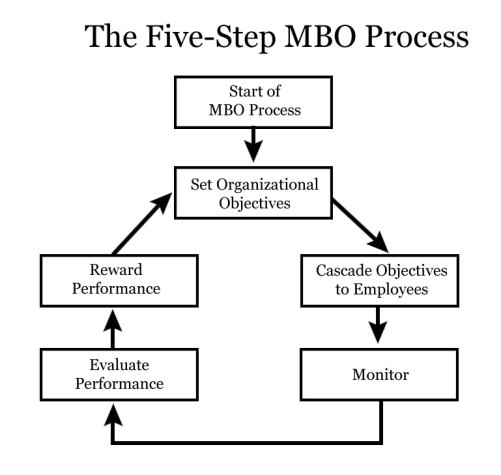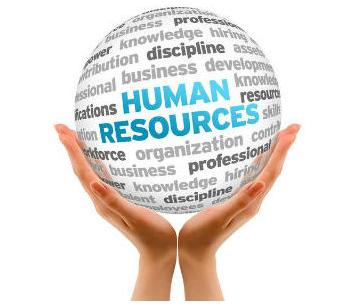Management by Objectives (MBO) was first popularized by Peter Drucker in 1954 book ‘The Practice of Management’. Drucker drafted MBOs as an approach to get the management and employees to jointly set goals to achieve known as objectives. The main purpose for setting objectives was to give both the managers and employees a clear understanding of what they were expected to do in the organization in order to achieve the objectives set. The objectives were set during certain time periods which at the end of the period to evaluative performances are carried out to determine the extent to which the set objectives had been achieved. An example of an objective includes attaining a sales or profit target by the endContinue reading
HRM Concepts
Steps in Management by Objectives (MBO) Process
Management by objectives (MBO) is a systematic and organized approach that allows management to focus on achievable goals and to attain the best possible results from available resources. It aims to increase organizational performance by aligning goals and subordinate objectives throughout the organization. Ideally, employees get strong input to identify their objectives, time lines for completion, etc. MBO includes ongoing tracking and feedback in the process to reach objectives. Management by Objectives (MBO) was first outlined by Peter Drucker in 1954 in his book ‘The Practice of Management’. In the 90s, Peter Drucker himself decreased the significance of this organization management method, when he said: “It’s just another tool. It is not the great cure for management inefficiency.” The mainContinue reading
Impact of Motivation on Employee Behavior and Performance
One of the most challenging aspects of human resource management is employee motivation. It manifests itself through employee morale, output, absenteeism, effort, labor turnover, loyalty and achievement. Motivation is generally defined as an internal state that induces an employee to engage in particular behaviors, or a set of factors that cause employees to behave in certain ways, but it is extremely complex. This is because employee motivation is the product of many interacting factors such as the culture of the organization, management’s leadership style, the structure of the organization, job design and HR policies and practices. The employee’s personality, skills, knowledge, abilities and attitudes also play a part. Motivation is not understood by managers and its essence remains enigmatic. ItContinue reading
Strategies to Reduce Employee Turnover
Today, most of the companies believed that in order to achieve and sustained effectively, human resource management (HRM) needs to be efficient. Effective HRM can be main factor for the success of an organization. In the new economy, it has become a trend of employees staying on for a short duration in any one organization, which results to many problems. Failure in managing human capital will create fatal problems to the company. Therefore, most of the organizations, both domestic companies and multinational corporations (MNCs) tend to focus more on HRM as a key of success. 1. Hiring the Right People Hiring the right people from the start would also reduce employee turnover. Managers should have a clear idea of theContinue reading
Employee Turnover – Meaning, Causes and Effects
In today’s highly dynamic commercial work, it is becoming a challenge for job-seekers to find jobs that best fit their personality, and for employers to hire the right people who can do the job and also integrate well into the company culture. Failure to overcome this issue can be resulted in high turnover of employees. Employee turnover is a part of normal business activity; whereby employees come and go as their life situations change. Most employers realize this and, indeed, large firms typically have entire departments devoted to the management of human resources in order to make the transition as easy as possible for both management and employee and to minimize the associated hiring and training costs. Employee turnover isContinue reading
Current Trends in Human Resource Management
The world of work is rapidly changing. As a part of organization, Human Resource Management (HRM) must be prepared to deal with effects of changing world of work. For the HR people it means understanding the implications of globalization, work-force diversity, changing skill requirements, corporate downsizing, continuous improvement initiatives, re-engineering, the contingent work force, decentralized work sites and employee involvement. Let us consider each of them one by one. 1. Globalization and its implications Business today doesn’t have national boundaries – it reaches around the world. The rise of multinational corporations places new requirements on human resource managers. The HR department needs to ensure that the appropriate mix of employees in terms of knowledge, skills and cultural adaptabilityContinue reading




